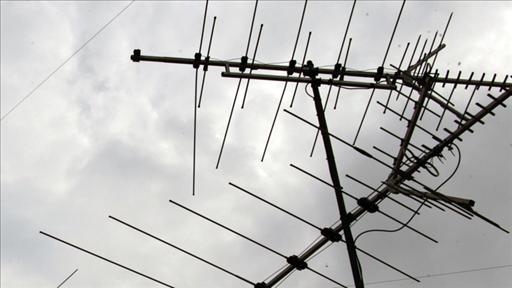How many TV households rely on terrestrial? Depends on whom you ask
There’s an old saying that “numbers don’t lie,” but in today’s world it is important to know the source of those numbers in order to determine if they are providing an accurate picture. All of the surveys and data served up to date usually reflect the bias of whoever issues the report.
Case in point, two powerful television industry organizations are pitted against each other in determining how many people still watch OTA TV. New data shows the numbers are declining, but the NAB — which clearly has an interest in keeping the viewership numbers high — is crying foul.
Last week the Consumer Electronics Association (CEA) announced a new survey that found only 7 percent of American TV households still rely solely on an antenna for receiving their television programming. The statistic comes from a new study: the U.S. Household Television Usage Update.
The findings, say the CEA, are consistent with the group’s 2010 research, which found 8 percent of TV households reported using an antenna only for television programming. According to historical CEA research, there has been a gradual decline in the percentage of TV households using antennas since 2005.

The phone survey of 1009 U.S. adults is comparable to a 2012 Nielsen study indicating 9 percent of all U.S. TV households are broadcast TV/OTA only — a decrease from 16 percent in 2003.
“The vast majority of Americans no longer rely on over-the-air TV signals,” said Gary Shapiro, president and CEO of the CEA. “Consumers have moved away in droves from traditional broadcast television thanks to a surge in programming alternatives available through wired and wireless broadband connections. This is why Congress had it right when they authorized the FCC to hold voluntary broadcast spectrum incentive auctions to reallocate broadcast television spectrum to greater uses, like wireless broadband. This study provides yet another reason why it is time for broadcast spectrum to be reallocated, and quickly.”
The CEA’s study also reveals that most TV households (83 percent) receive television programming through traditional pay tv services (cable, satellite or fiber to the home). However, there has been a decline of 5 percentage points in the number of homes using those services since 2010. The use of non-TV consumer electronics devices (such as laptops, desktops, tablets and smartphones) in the home to consume content is likely affecting pay TV subscriptions.
The professional video industry's #1 source for news, trends and product and tech information. Sign up below.
According to The 15th Annual Household CE Ownership and Market Potential Study, these mobile connected devices are seeing the fastest increase in U.S. household penetration rates. This decline may also be attributed to increasingly accessible Internet-sourced television programming. Increasing household ownership of Internet-connected televisions and other devices that facilitate connection to the Internet opens up new possibilities for viewing television programming on a traditional TV set.
The study found 28 percent of U.S. TV households receive programming on their TVs through the Internet. In fact, 4 percent of TV households report using the Internet exclusively as their source of television programming for their TVs.
The CEA said its latest report was completed in June 2013. It represents the findings of a quantitative study administered via telephone interview between June 6 and 9, 2013 to two national probability samples, which, when combined, consists of 1009 U.S. adults. Researches conducted 659 interviews by landline phone and 350 interviews were conducted by cell phone. The report was designed and formulated by CEA Market Research.
The CEA’s survey immediately drew an attack from Dennis Wharton, the NAB’s public relations executive.
“CEA’s findings strain the bounds of credibility, beginning with the fact that its alleged ‘research’ was conducted by CEA staff members rather than an independent firm,” Wharton said. “Contrast that with the recent independent study by GfK, a world-recognized consumer research firm, that found that 19.3 percent of homes rely exclusively on over-the-air television. Moreover, CEA surveyed barely 1000 people, compared to the more than 3000 homes that participated in the GfK study. We’re confident that GfK’s research is far more credible than that of a trade association with a track record of anti-broadcasting bias.”
As with political campaigns and other polling measurements, there’s always a margin of error in polling, which was not revealed here by any of the parties. But whether OTA viewing is at 7 percent or about 19 percent, it still seems the viewer numbers are quite low.
At the end of the day, no matter whom you choose to believe, the numbers seem to clearly indicate that between at least 80 percent to more than 90 percent of the American people do not receive their television from OTA antennas. No amount of spin or lobbying can gloss over these ever-decreasing numbers.
